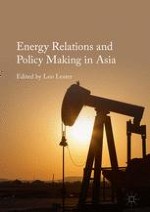2016 | OriginalPaper | Buchkapitel
13. Energy Embodiments of the GCC and NEA Countries
verfasst von : Zhan-Ming Chen, Tianyi Li
Erschienen in: Energy Relations and Policy Making in Asia
Verlag: Springer Singapore
Aktivieren Sie unsere intelligente Suche, um passende Fachinhalte oder Patente zu finden.
Wählen Sie Textabschnitte aus um mit Künstlicher Intelligenz passenden Patente zu finden. powered by
Markieren Sie Textabschnitte, um KI-gestützt weitere passende Inhalte zu finden. powered by
